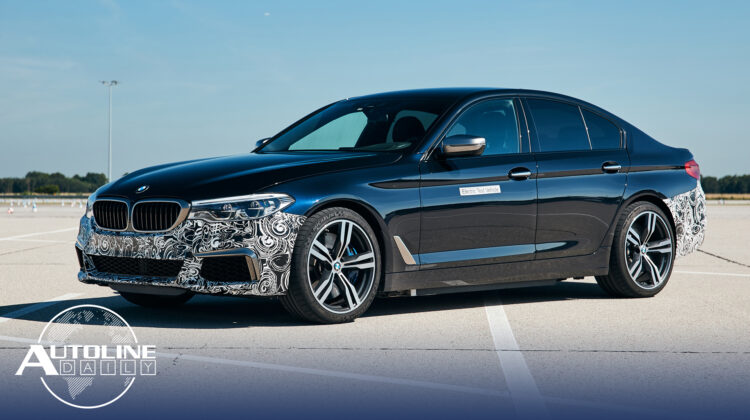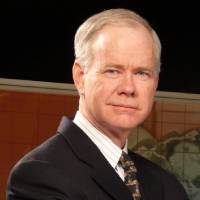
Follow us on social media:
Runtime: 6:29
0:07 Mitsubishi Moves North American HQ to TN
0:31 Carmakers in Europe Face Big Fines
1:17 Hyundai To Offer Lyft Rides to Customers
2:07 Ford Puma Now a Crossover
3:07 BMW Packs EV Tech into A 5 Series
4:38 BMW Drags Feet on Battery Cell Production
5:23 Japanese Dominate ‘American-Made Index’
Visit our sponsors to thank them for their support of Autoline Daily: Bridgestone and DuPont.
This is Autoline Daily reporting on the global automotive industry.
MITSUBISHI MOVES NORTH AMERICAN HQ TO TN
Mitsubishi is moving its North American headquarters out of California and into Tennessee. Nissan, which owns a stake in Mitsubishi, also has its North American headquarters located in Tennessee, so this move isn’t too surprising. Mitsubishi, which has been in California since 1988, will begin moving in August and expects to finish by the end of the year.
CARMAKERS IN EUROPE FACE BIG FINES
Carmakers in Europe face big fines due to stricter emission rules for passenger vehicles that are upcoming. By 2021, automakers must cut their fleet average emissions to 95 grams of CO2 per kilometer. And according to a new study from AlixPartners, Volkswagen and FCA will be rocked hardest by the new targets. VW faces a fine of over $2 billion and FCA over $800 million, if they don’t comply. Volvo and Toyota are the only major automakers that don’t face fines. While VW says it will comply with the new rules, FCA will likely have to pay the fine or buy emission credits from other automakers to meet the targets.
HYUNDAI TO OFFER LYFT RIDES TO CUSTOMERS
Hyundai is launching a new service in the U.S. to offer customers Lyft rides while their car is being worked on. Dealers must subscribe to Hailer, an app developed by CDK Global and Lyft, to offer customers the ride. Once the service is complete, the dealer will arrange another Lyft ride to bring the customer back. The dealer can decide whether to charge customers for the ride or add the cost to their service bill. The customer does not have to have the Lyft app to get a ride.
FORD PUMA NOW A CROSSOVER
The Ford Puma is back for Europe, but has morphed from a compact coupe into a compact crossover. The only thing tying the two vehicles together is the shape of the headlights. Under the hood will be a range of gasoline and diesel engines, including a mild-hybrid option that comes in two power outputs. That system combines a 1.0L 3-cylinder EcoBoost engine with a belt-driven starter/generator. The Puma rides on Ford’s B-car platform, which also underpins the Fiesta, but features a new, stiffer twist-beam rear suspension, larger shock absorbers, stiffer suspension bushings and optimized suspension top mounts. Interior highlights include a 12.3-inch digital instrument cluster and an 8-inch tablet-like display screen mounted in the center of the dash. The new Puma will go on sale at the end of the year.
BMW PACKS EV TECH INTO A 5 SERIES
BMW, like most automakers, is making a strong push into electrification and is showing off what it’s capable of. The Power BEV is a 3-motor electric vehicle with over 700-horsepower that can do 0 to 100 km/h in under 3-seconds, all wrapped up in 5 Series skin. By packing all its EV technology into a 5 Series, which engineers were able to install without compromising passenger space, it makes it easier for BMW to compare the setup to other possible powertrains. The motors, one mounted in the front and the other two on the rear axle, are entirely free of rare earths and allowed the automaker to learn about tuning a vehicle with electronic torque vectoring. And we’ll start to see some of this technology soon. One of these rare earth-less motors will make its way into the upcoming iX3.
And hey, don’t forget about Autoline After Hours tomorrow. Joining John and Gary are James Martin from IHS Markit and Lindsay Brooke from SAE Engineering. Come along for the ride when we go live at 3pm eastern time on our website or YouTube channel.
BMW DRAGS FEET ON BATTERY CELL PRODUCTION
The German government is pushing automakers to establish battery cell production in Europe, in order to keep up with Asian rivals and to meet future environmental goals. But Bloomberg reports BMW is dragging its feet on the goals because it doesn’t believe that all carmakers should be involved in making their own cells. The company would rather work with a consortium of companies already producing the cells. And we think BMW has a point. Why invest in lithium-ion when that technology will probably be obsolete within 10 years? But not all German automakers agree with BMW. Earlier this year, Volkswagen partnered with Northvolt to produce battery cells in Germany.
JAPANESE DOMINATE ‘AMERICAN-MADE INDEX’
Cars.com released its annual “American-Made Index and found that Japanese automakers dominate the list. The study looked at assembly location, parts sourcing, factory employment relative to sales and sourcing of engines and transmissions. It found that 9 of the 15 most American made vehicles on the list are built by Toyota or Honda. But this ranking ignores where vehicles were designed, engineered and developed. Toyota and Honda develop their trucks and SUVs in the U.S. but their cars are typically done in Japan.
And a quick programming note before I sign off. Autoline Daily will be off all next week because we’re taking a break for the July 4th holiday.
But that’s it for today, thanks for watching and please join us again tomorrow.
Thanks to our partner for embedding Autoline Daily on its website: WardsAuto.com

John McElroy is an influential thought leader in the automotive industry. He is a journalist, lecturer, commentator and entrepreneur. He created “Autoline Daily,” the first industry webcast of industry news and analysis.





